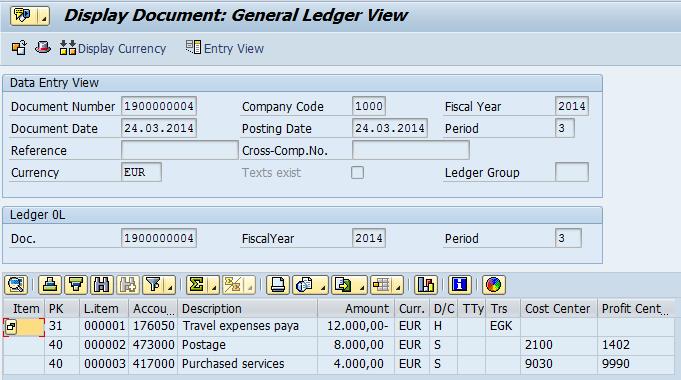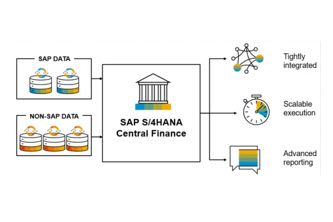Learning SAP: Buy or Build SAP Training?
by Michael Management
 The demand for employees with SAP-related skills has never been higher.
The demand for employees with SAP-related skills has never been higher.
That’s why so many people are scrambling to learn SAP, especially at enterprise-level businesses. It’s the ideal way to grow your skill set, become more well-rounded, and offer more value to an employer.
But there’s one big question to answer for anyone who wants to learn and build their SAP skills — do you buy materials to help learn or you build the skills yourself?
This question of “buy or build” is what we’re here to discuss today. The truth is that it’s not necessarily a single answer — it’s a decision to understand what method works better for you.
In this blog, we’ll talk about some of the advantages and disadvantages of choosing whether to buy or build your SAP training program.
Pros & Cons: Buying SAP Curriculum & Materials
Buying your own curriculum to learn SAP comes with a number of advantages and disadvantages.
The first advantage is that you’re getting curriculum that is proven to help people like you learn and use SAP. This is an enormous promise from curriculum developers because it means you’re getting high-quality, tried-and-true lessons that can fast-track your skill development.
The second advantage is that you can work on your SAP education at your own pace. This means you can progress as far as you’d like through a single unit or with a certain skill. More importantly, it also means you have the luxury of going back and re-attempting skills that may have given you trouble at first.
This fact also dovetails with our third advantage: Practicing in a consequence-free environment. SAP curriculum is designed to help you learn by doing. However, it’s also set up to ensure you can practice your skills in an isolated environment that won’t have an impact on a business. That means you can freely make mistakes and, in many cases, try something just to “see what happens.” This freedom means that you don’t have to worry about impeding a business’s growth, and you can also enjoy your education.
The first disadvantage is that SAP curriculum costs money. If you don’t have an employer financing your education, then you’ll be paying for your curriculum out of pocket. That can be a challenge for someone who’s currently just “getting by,” but wants to grow their SAP skills. However, many companies know the tremendous value of a corporate SAP training program and are happy to absorb this cost for employees.
The second disadvantage is that you’ll most likely have to pursue your SAP education during your own free time. You can try asking your employer for an ongoing education stipend to help make it a little more worth your while, but generally speaking, SAP will be your evenings and weekends for at least a week.
Now that we’re covered the pros and cons of buying SAP curriculum, let’s take a look at learning SAP skills on your own.
Pros & Cons: Self-Teaching SAP Skills
Self-education is viewed as a virtue by many self-starters, particularly CEOs and other C-level executives. However, the main question here is whether it’s right for you.
The first advantage of teaching yourself SAP is the cost. You may be able to use your employer’s platform to work, practice, and grow in your skills, or you can log in to a real SAP system with an inexpensive SAP Access Subscription. This means that you can continue to earn an income while growing in your skills without a financial burden.
Next, the second advantage of self-teaching SAP is that your employer may let you learn and practice on the clock. This means you not only retain your nights and weekends, but also get paid to learn.
The third advantage of teaching SAP to yourself is that you learn in a hands-on environment that is completely self-guided. That means you get to choose what you practice, and you don’t have to spend time re-learning the same skills that you may have already picked up. This is a huge time-saver, and depending on your employer, it could fast-track your eligibility for a pay increase or promotion.
The first disadvantage of teaching yourself SAP is that you may be working directly in your employer’s SAP interface. That means you have to be 100% aware of the instances you’re creating, editing, and deleting. One wrong keystroke could be the difference between a thriving business and a sidelined IT department. Of course, with a subscription to a live SAP sandbox, this issue is minimalized.
The second disadvantage of self-learning SAP is that you may not know what you don’t know. As silly as this may sound, it’s a real phenomenon that part of learning is being introduced to new ideas and concepts. In other words, if you don’t know that a function exists in SAP, how are you supposed to discover it on your own?
With all of this in mind, it’s time for us to revisit our original question.
Learn More from Our Infographic: Buy or Build
We’ve created a simple visualization that compares buying and building so that you can determine the best method for yourself.
Buying may have some downsides financially, but that’s not always something to consider as an “expense.” After all, learning SAP makes you a more marketable employee, and that means you could end up with a handsome pay increase that earns your money back in no time.
At the same time, the concept of building skills on your own is a respected and admired undertaking, particularly by the owners of bootstrapped companies. If you’re an ambitious self-starter, this could be the perfect way for you to pursue SAP education.
Are you ready to figure out where you lie in the argument of buy vs. build?
Click here to download the free infographic.
by Michael Management
More Blogs by Michael Management

Unlock Financial Precision: The Critical Role of...
Mastering Document Splitting in SAP Central Finance: Essential Ins...

Unlocking Success: The Strategic Imperative of Group...
Why is Group Reporting Critical for SAP Central Finance? Masterin...

Kickstart Your Career: Mastering SAP Inventory...
SAP inventory management is an in-demand skill set from large companie...
Related Blogs

SAP for Financial Professionals: 5 Steps to Get Started
Systems applications and products (SAP) is one of the best-known and m...

How to Become an SAP Accounts Payable Specialist
Are you looking to start a career in corporate finance work? Have you ...

SAP Online Training Courses: Are They Worth It?
Companies are always looking for employees with keen, sharp, and up-to-date SAP...
.png)

